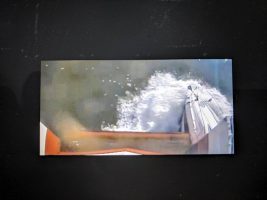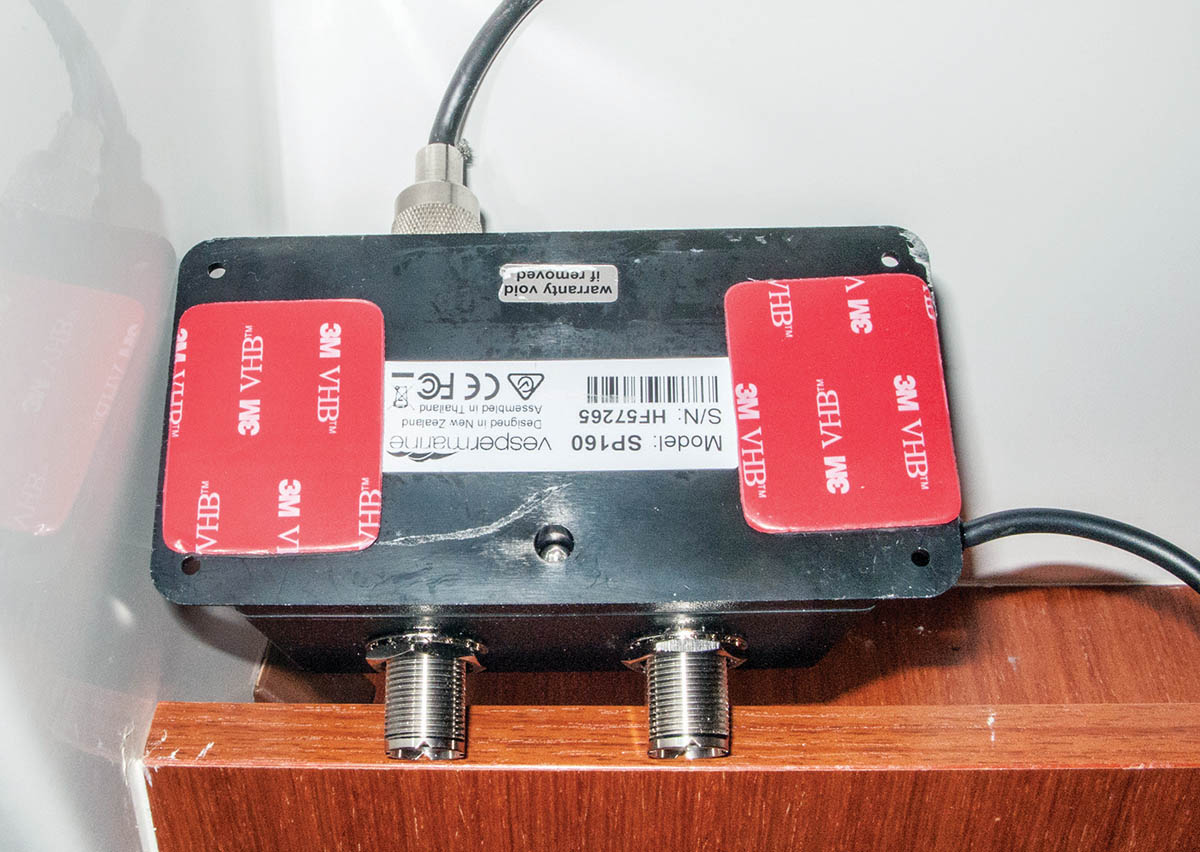Gilbert Park weighs up the benefits of AIS Class B+ for his powerboat
I ’d been thinking about buying an AIS transceiver for my Merry Fisher 855 for some time.
I use my boat mainly in the Solent, where avoiding other vessels is a major concern, but in the end it was a Marine Accident Investigation Branch (MAIB) report that made me knuckle down and place an order to fit a unit over winter.
The MAIB report in question concerned the collision in September 2018 between Phoenix, a 10m motor cruiser and the ro-ro passenger ferry Red Falcon in the Solent. Thankfully nobody was injured, but the damage to Phoenix was significant.
There was criticism in the report for the skipper of Phoenix and (to a lesser extent) the crew on the bridge of Red Falcon, but the investigators simply stated that an AIS transceiver on board the smaller boat ‘would have enabled the display of Phoenix as an AIS target on Red Falcon’s ECS, which was readily visible to the ferry’s chief officer, and the display of Red Falcon as an AIS target on board Phoenix’.

The Doral 10m powerboat Phoenix was pushed along by the IOW ferry Red Falcon for 18 seconds. Credit: Laurie Tennant
Reading this report triggered a memory of mine from another bright, sunny day six years ago. We were leaving Felixstowe through the North Channel in my Seaward 25 at the time, which was fitted with an AIS receiver linked to the multifunction display.
All of a sudden the AIS audible and visual alarm went off warning of a dangerous target and showing it was two miles behind us. Because of the warning I was able to avoid a collision. The cargo vessel took no action: no change of course, radio call or sound signal. As both the ship’s name and MMSI number were displayed on the screen I called the watchkeeper. He hadn’t seen me at all.
So my mind was made up about fitting an AIS transceiver to my new boat, but I still needed to do a bit more research.
What is AIS?
AIS stands for Automatic Identification System. An AIS transceiver is basically a VHF radio connected to a GPS and a VHF aerial. The radio broadcasts data about your boat and receives data from any other transmitters within range, then outputs that information to a display.

Originally there were just two different classes of AIS transceiver for vessels: Class A and Class B. They were designed to coordinate their broadcasts, so as not to interfere with each other.
Each transceiver determines what other AIS units are within its range and then books a time slot of 26.6 milliseconds in which to transmit its information. This is known as Time Division Multiple Access (TDMA), and allows up to 4,500 vessels to operate in the same vicinity.
Class A is mandatory for vessels over 300 tons or carrying more than 12 passengers and is a much more powerful transmitter than Class B. Class A transmissions are broadcast more frequently at greater speed and these units negotiate broadcast time slots using a system called Self Organised Time Division Multiple Access (SOTDMA).
Class B transceivers broadcast at just 2W (8-10 miles max range) and only transmit once every 30 seconds when underway regardless of speed. They book broadcast slots using Carrier Sense Time Division Multiple Access (CSTDMA), which means they give way to Class A transmissions. In busy waters a Class B may have to delay its transmission to the next available time slot.
Recently, an in-between Class B+ has been made available. This uses the same SOTDMA system as Class A, and has the same priority ensuring it will always transmit at its negotiated time. It transmits at 5W – more than double the power of normal Class B – and, like Class A, it broadcasts more frequently the faster it is travelling.
Do I need Class B+ AIS transceiver?
So how to decide which class to buy? First let’s dismiss Class A as they’re expensive and not designed for the leisure sailor. This leaves the newer Class B+ or the standard Class B device.
For displacement boats travelling at slow speeds, operating close to the coast there is little advantage to Class B+ over Class B.
But for planing boats that go faster the B+ unit will update more often and more reliably meaning other boats’ receivers and transceivers will be displaying a clearer picture of your movements.
For instance: at 30 knots a boat will move 0.25 miles in 30 seconds. If its Class B time slot is taken by a Class A or B+ AIS signal then it is possible that a further 30 seconds could elapse before the next screen update, during which time the boat will have travelled another quarter of a mile.
Additionally, if you are travelling offshore then the more powerful signal from a B+ AIS is much more likely to be visible to AIS satellites than the Class B. This could be important in a search and rescue situation.
My boat can do 25 knots, but I won’t go above 18 knots and I never go offshore so I wasn’t convinced Class B+ was worth the additional cost.
Installation and hidden extras
Some Class B and B+ units have an integral GPS antenna; others need external ones. All units will need a VHF antenna and all will need cables to connect the AIS output to a display.
It is possible to use an existing VHF aerial and a splitter to save installing a dedicated VHF aerial. A splitter is a small box that permits two devices (in this case an AIS transceiver and a normal VHF radio) to connect to a single VHF aerial cable.
But do check that you buy a splitter suitable for separating a Class B AIS from a VHF signal. Some are only suitable for separating VHF from other receive-only devices. Transceivers with integral splitters are worth considering.
Looking at various websites the cost differential between a Class B and B+ was small, but when I rang Cactus Navigation to discuss it they offered me a free Vesper SP160 amplified splitter with the Vesper XB6000 Class B AIS – both units I was considering.
The 12db amplifier inside the Vesper Marine SP160 works to cancel out any loss through splitting by enhancing AIS target and VHF reception. The manufacturer claims that users report improved VHF reception due to the amplification over long cable runs and possibly multiple cable joints.
This offer ticked a lot of boxes: no need to fit a new aerial, the transceiver had a built-in GPS as well as an external GPS aerial, and most connecting wires were included resulting in a saving of several hundred pounds.
Top tips on AIS installation
1. GPS Setup Requires a computer with a USB connection. Take care entering your MMSI number: once in you can’t change it without a special clearance code provided by your unit’s manufacturer
2. Adhesive I used high modulus adhesive pads to stick some of the lower weight units in place behind quite thin GRP. Only the heavy transceiver unit needed a thick bulkhead to be screwed into.
3. Silence switch I could have fitted a ‘silence switch’, which turns off my outgoing AIS identification info, but I don’t see the point. I want people to know where I am and on several boats I have had this facility but never used it.
Originally published in Practical Boat Owner magazine July 2020







